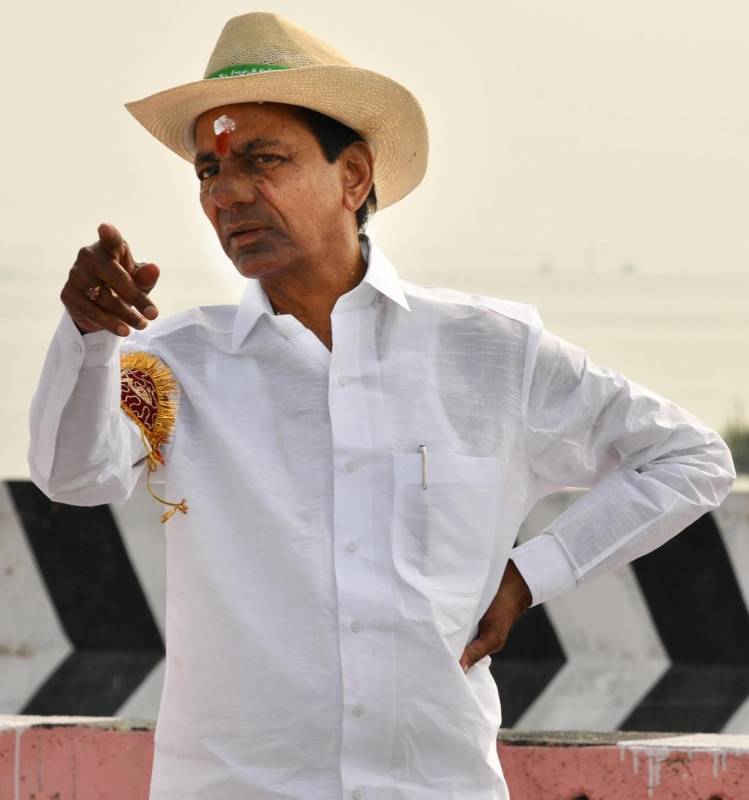Will 2020 be a good year for Telangana?
By Jinka Nagaraju
Hyderabad: Politically speaking, the year 2019 is a colorful success story for Telangana government and chief minister K Chandrasekhar Rao.
In all major political events, the KCR government and the TRS party have emerged victorious and the critics have been proven awfully unimaginative.
The landslide victory in Assembly elections held at the end of 2018 followed by the string of victories namely Panchayat and ZP elections, byelection in Huzurnagar, the final outcome of 52-days long RTC strike and the encounter killing of Disha accused, have helped KCR script a success story. Political pundits were at a loss of words as KCR bounced back with renewed vigor after every crisis.
As the TRS government prepares to bid farewell to 2019, the celebrated success story failed to conceal the real story, an alarming story of economic woes.
Telangana which was born rich has for the first time faltered in 2019. The growth rate in the first three quarters of 2019 is a mere 4.5 percent. It’s a free fall from 17 -20 percent growth rate the state enjoyed for almost five years.
The once surplus state has reportedly now become eligible for GST compensation like any other poor-performing states with a growth rate of lesser than 14 percent.
The overall performance of the state as shown by the just released Good Governance Index (GGI) was miserably poor and as a result state has slipped into eleventh position among a group of 18 bigger states. The sad part of the story is Madhya Pradesh, which was a BIMARU state, is two notches above Telangana.
The report of Good Governance Index of Indian states was released last week by Jitendra Singh, union minister of state, PMO. The performance of the states and Union Territories was assessed on the basis of sectoral performance in 10 sectors such as agriculture, commerce & Industry, Public health, Infrastructure, economic governance, citizen centric governance etc.
Unexpectedly Tamil Nadu jumped to the top slot while Maharashtra, Karnataka, Chhattisgarh and Andhra Pradesh followed it in that order. Telangana could not find a place in top ten states. The state is in 11 position, below West Bengal and above Rajasthan. It clearly shows the state of health of Telangana government.
The fall in the growth has vindicated the caution made by NK Singh, chairman, Fifteenth Finance Commission during his visit to the state some time back. He had warned the state that if the growth rate were to fall debt servicing as well as financing of numerous projects and welfare schemes would be affected. Singh made this caution against the backdrop of growing debt burden over Rs 2 lakh crore. The recently released statistics of growth rate, and the good governance index have vindicated what NK Singh had cautioned about.
Now, at the end of the first year in his second term, KCR’s government is no longer in the comfort zone and the tough time is staring in the face as the financial commitments for welfare measures and projects launched in the first term are well beyond the ways and means available for the state.
While critics say the fiscal Profligacy in the first term was responsible for it, government sources put the blame on the economic slowdown and shortfall in the GST collections in the country.
In the first term (2014-2018) KCR enjoyed the fruits of the successful Telangana movement. As the protagonist of agitation for statehood, he had received unwavering moral support since the memories of the 14 year-long movement were fresh.
This had emboldened the chief minister to launch numerous major projects, discarding the ones started by the previous Congress government of united Andhra Pradesh. These projects are yet to be completed.
The first indication of the shape of the things to come was revealed at the time of presentation of the budget 2019-2020 by none other than the chief minister himself. The CM had cut the budgetary spending by fifth pointing to the economic slowdown and dip in the revenues.
This seems to have affected not only the progress of on-going projects but also the implementation of welfare measures such as Rythu Bandhu, farmers' loan waiver, 2BHK etc.
A few Schemes like an allowance for unemployed are yet to see the light of the day. Of all the schemes, Rythu Bandhu and the loan waiver are said to have played a major role in the massive win TRS secured in the 2018 elections. In 2020 the state may find it difficult to finance these flagship schemes.
Will KCR’s political magic reverse the situation in 2020 and script a new success story in the economic front as well?